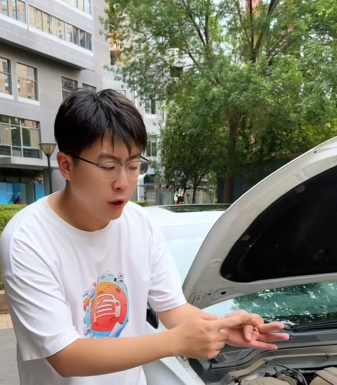
Buying a used car can be a smart decision. It saves money, avoids rapid depreciation, and can still give you years of reliable service. However, the process also comes with risk. Unlike buying new, where everything is guaranteed, buying a used car means you must be extra cautious. Dishonest sellers, hidden issues, and fake documents are all potential traps. To avoid being cheated when buying a used car, follow these essential steps.
1. Do Your Research
Before even contacting a seller, arm yourself with knowledge. Decide on the make and model you’re interested in and research common problems for that vehicle. Use platforms like Kelley Blue Book, Edmunds, or Consumer Reports to understand the fair market value of the car based on its condition, mileage, and year.
Also, look at online reviews to learn what other owners say. Some cars are known for engine issues, others for electrical faults. When you know what to expect, it’s easier to spot a bad deal or a potential scam.
2. Buy from a Trustworthy Source
There are several places you can buy a used car: private sellers, used car dealerships, auctions, and certified pre-owned (CPO) programs from official dealers.
- Private Sellers: They often have the best prices, but there’s no warranty and more risk. Ask why they’re selling the car and how long they’ve owned it.
- Used Car Dealerships: They may offer financing and warranties, but beware of pressure tactics.
- Certified Pre-Owned: These cars go through strict inspections and come with warranties. They’re more expensive but lower risk.
- Auctions: Usually for experienced buyers only. No test drive or inspection makes this very risky.
If possible, buy from a seller with a good reputation or someone recommended by people you trust.

3. Check the Car’s History Report
Never buy a car without checking its history. Services like Carfax, AutoCheck, or government VIN check websites allow you to enter the car’s Vehicle Identification Number (VIN) and get a report.
This report can reveal:
- Accidents or flood damage
- Odometer rollback
- Number of previous owners
- Title status (clean, salvage, rebuilt)
- Maintenance records
If a seller refuses to give you the VIN or makes excuses, walk away. That’s a major red flag.
4. Inspect the Car Thoroughly
Even if the history report is clean, you still need to inspect the car. Use this basic checklist:
- Exterior: Look for mismatched paint, dents, rust, or poorly aligned panels that suggest it was in an accident.
- Interior: Check the seats, dashboard, and controls. Worn-out interiors on low-mileage cars may mean the odometer was tampered with.
- Under the Hood: Look at the engine, hoses, and fluids. Leaks or strange smells are signs of trouble.
- Tires: Uneven tire wear could indicate alignment issues or suspension problems.
- Exhaust: Excessive smoke is a big red flag.
5. Test Drive in Different Conditions
Never buy a car without test-driving it. Drive in both city and highway conditions to see how it performs.
- Listen for strange sounds: knocking, rattling, or squeaking.
- Check acceleration, braking, steering, and handling.
- Observe if the car pulls to one side or if the brakes feel soft.
- Look at the dashboard for any warning lights.
This will help you get a feel for the car and notice anything odd before making a decision.

6. Get a Trusted Mechanic’s Inspection
Even if everything looks fine to you, a professional mechanic can catch issues you may miss. Pay for a pre-purchase inspection (PPI) — it’s worth the cost.
A mechanic can:
- Identify hidden engine or transmission problems
- Find leaks or worn-out parts
- Spot flood or fire damage
- Estimate the cost of necessary repairs
If the seller refuses a mechanic inspection, that’s a major warning sign.
7. Check the Paperwork Carefully
Don’t just focus on the car — the paperwork is just as important. Review the following:
- Title: Make sure the name on the title matches the seller. If not, the car might be stolen or the seller is “flipping” cars illegally.
- Bill of Sale: This protects you legally and shows proof of purchase.
- Service Records: These show how well the car has been maintained.
- VIN on the Car: Check that the VIN on the car matches all the documents.
Avoid cars with salvage or rebuilt titles unless you know exactly what you’re doing.

9. Watch for Common Scams
There are several tricks dishonest sellers may use:
- Odometer Fraud: Rolling back the mileage to make the car seem newer.
- Title Washing: Changing a car’s title to hide damage history.
- VIN Cloning: Using a fake VIN to disguise a stolen car.
- Fake Escrow or Payment Requests: Scammers pretending to be third-party services online.
Avoid sending money before seeing the car. Always meet in person in a public, well-lit location, and bring someone with you if possible.
10. Trust Your Instincts
If anything feels off — walk away. Whether it’s a pushy seller, missing documents, or a bad gut feeling, it’s better to be safe than sorry. Don’t let emotion cloud your judgment. There will always be another car.
Final Thoughts
Buying a used car doesn’t have to be scary. With the right knowledge, you can protect yourself from being cheated and make a smart, informed decision. Always take your time, double-check everything, and never rush into a deal. It’s your money and your safety on the line.
Remember: A little caution today can save you a lot of regret tomorrow.


